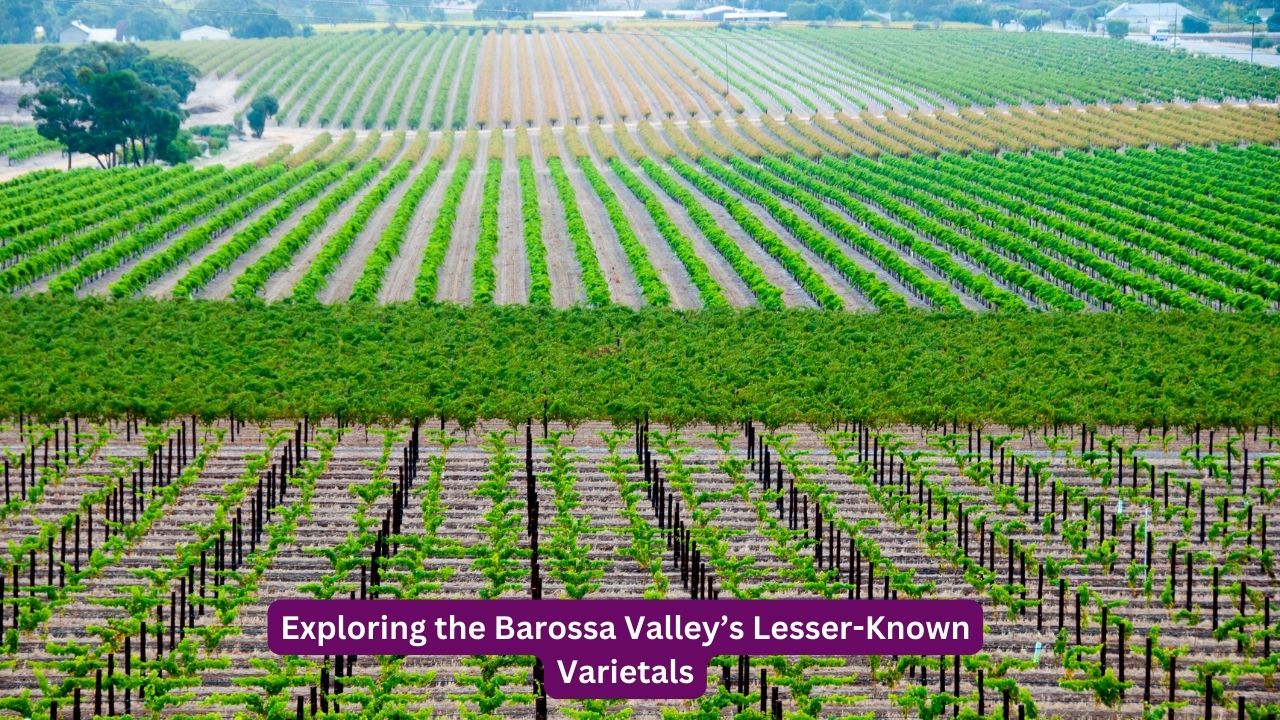
Contents
Introduction
Welcome to the Barossa Valley, not just a wine region, but a captivating mosaic of flavours, cultures, and histories. Known globally for its robust Shiraz and crisp Riesling, the Barossa Valley often overshadows its lesser-known varieties. But there’s more to this lush region than meets the eye. For wine enthusiasts, cultural travellers, and advocates of indigenous culture, the Barossa Valley offers a treasure trove of hidden wine gems waiting to be discovered. Join us as we explore these unique varieties and the rich tapestry of history that makes them so special.
Overview of Barossa Valley’s Mainstream Varietals
The Barossa Valley is synonymous with world-class wines. When you think of Barossa, Shiraz likely comes to mind. This bold, full-bodied red wine has earned its place on the global stage, captivating palates with its intense flavours and aromas. Alongside Shiraz, Riesling stands out as a crisp, refreshing white wine, offering a delightful contrast to the valley’s robust reds. These mainstream varieties are the backbone of the region’s wine industry, drawing millions of visitors each year to taste the Barossa.
However, while Shiraz and Riesling dominate, they are just the tip of the iceberg. The Barossa Valley boasts a diverse range of varietals that often remain in the shadows, waiting for curious wine lovers to uncover their stories.
Unveiling the Hidden Gems
Beyond the well-trodden paths of Shiraz and Riesling lie the valley’s lesser-known varieties, each with its unique flavour profile and history. These hidden gems include varieties such as Grenache, Mourvèdre, and Cinsault. Grenache, for instance, is a versatile red wine that can be enjoyed both young and aged. It offers fruity, spicy notes that make it a delightful alternative to the more intense Shiraz.
Mourvèdre, another hidden treasure, brings a rich, earthy character to the table. Often used in blends, it also stands strong as a single varietal. Meanwhile, Cinsault, with its light, fragrant profile, provides an excellent option for those seeking something different. It’s perfect for warm summer days, offering a refreshing alternative to heavier reds.
These varieties not only add diversity to the Barossa Valley’s wine offerings but also provide a deeper insight into the region’s winemaking heritage.
The Indigenous Connection
The Barossa Valley’s rich winemaking tradition owes much to its indigenous roots. Long before European settlers introduced viticulture, the land was home to the Peramangk and Ngadjuri people. These indigenous communities had a profound understanding of the land and its resources, which influenced the early winemaking practices in the region.
Indigenous knowledge of local flora and fauna played a crucial role in shaping the Barossa Valley’s viticulture. Many of the lesser-known varieties grown today reflect this deep connection to the land. Winemakers are increasingly recognizing the importance of honouring this heritage, incorporating sustainable practices that respect the environment and the traditional custodians of the land.
Exploring the Indigenous connection adds a layer of cultural richness to the experience of tasting the Barossa’s hidden varieties, making it more than just a sensory delight but also a journey through history and tradition.
Experiencing the Barossa Valley’s Lesser-Known Wines
For those eager to taste the Barossa’s hidden gems, several wineries and tours offer curated experiences. Barossa Wine Tours provides an excellent opportunity to explore these unique varieties. One highly recommended stop is the historic Seppeltsfield Winery, known for its commitment to preserving traditional winemaking methods. Here, you can taste a range of lesser-known varieties and learn about their history from expert guides.
Another must-visit is Langmeil Winery, where you can enjoy intimate tastings of rare varietals like Mourvèdre and Cinsault. The passionate staff at Langmeil is dedicated to showcasing the diversity of Barossa’s wine offerings, ensuring that each visitor leaves with a deeper appreciation of the region’s vinous treasures.
For a more immersive experience, consider joining a wine tour that focuses specifically on these hidden varietals. Taste The Barossa offers specialised tours led by knowledgeable guides who take you off the beaten path to discover the valley’s best-kept secrets.
Conclusion
The Barossa Valley is a jewel in the crown of Australia’s wine regions, and while its Shiraz and Riesling are world-famous, the lesser-known varieties offer an equally compelling adventure. From the fruity Grenache to the earthy Mourvèdre and the refreshing Cinsault, these hidden gems provide a rich tapestry of flavours and histories that are waiting to be explored.








